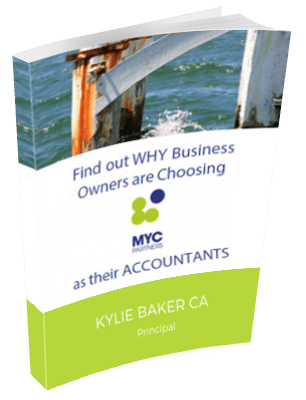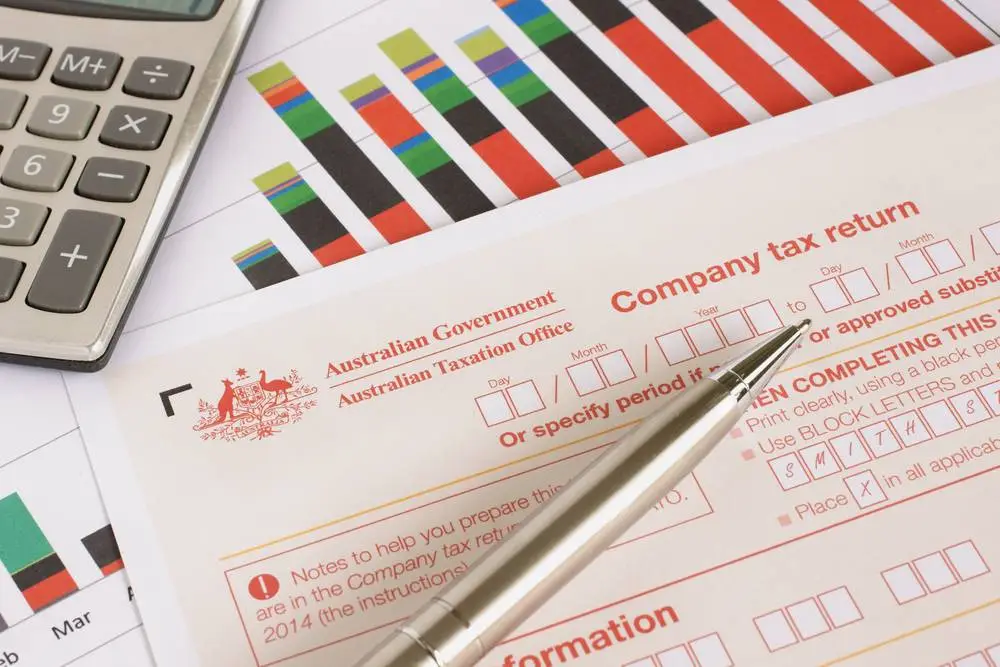
In recent years, the Australian Taxation Office (ATO) has been laser-focused on how professional services firms allocate and tax profits.
After releasing draft guidance, the ATO finalised its profit allocation guidelines for these firms in December 2021 by publishing Practical Compliance Guideline PCG 2021/4.
Professionals like accountants, lawyers, doctors and IT consultants should carefully study these guidelines. This post will break down the key guidance that practitioners need to understand.
Section 1: Who is Affected
The ATO’s profit allocation guidelines predominantly apply to professional services delivered through partnerships, trusts and companies. Firms in the accounting, legal, medical, IT, and consulting fields fall under this category.
Solo operators may also need to assess their risk rating under the guidelines if their income isn’t classified as Personal Services Income (PSI).
The guidelines don’t apply to personal service arrangements without a business structure.
However:
Professionals operating through an entity need to take heed.
Understanding the guidelines can help mitigate the risk of greater ATO scrutiny.
Section 2: Assessing if Income is PSI
According to ATO guidelines, the first step is determining whether the income generated is Personal Services Income (PSI).
Determining if income is PSI is crucial because different rules apply depending on the outcome.
Income is classified as PSI if it is mainly a reward for an individual’s efforts or skills. An entity such as a company or trust can receive income through this method. The individual is providing personal services.
PSI does not include income generated mainly from:
- Selling goods or property
- Using income-producing assets
- Licensing the right to use property
- A business structure rather than personal services
Determining if income comes from a business structure versus personal services can be tricky.
The ATO looks at factors like goodwill, employees contributing to income, and reliance on the individual’s skills and expertise.
PSI Tests Failed
If the PSI tests are failed, income attribution rules apply. This means the individual who personally performed the services is taxed on the income rather than the entity.
The income is attributed to them because it relates to their personal efforts. Certain deductions incurred by the personal services entity can reduce the amount subject to attribution.
But there are limitations on the deductions that can be claimed, including:
- No deductions for home office expenses like mortgage interest or rent.
- Limits on car expense deductions.
- No deductions for payments to associates for non-principal work.
There are also special PAYG withholding obligations that can apply when PSI tests are failed.
These attribution rules and deduction limits prevent individuals working through an entity from achieving a better tax result than being an employee performing similar services. The individual ends up in essentially the same position.
PSI Tests Passed
If the PSI tests are passed, the PSI attribution rules don’t apply.
Passing the tests means the individual or entity is classified as carrying on a personal services business (PSB).
However:
Even if the PSI tests are passed, the ATO can still seek to apply Part IVA, which is the general anti-avoidance provision in tax law.
The ATO is particularly concerned about PSI arrangements that appear to have the dominant purpose of splitting income with associates or retaining profits generated from personal services in a company or trust.
Some key factors the ATO looks at when considering Part IVA include:
- Is income being split with lower-taxed associates rather than those performing the services?
- Is the salary paid to the individual commensurate with their skill and contribution?
- Are profits retained in the entity instead of being distributed to the individual provider?
Practitioners should self-assess whether Part IVA could potentially apply to their situation even if they pass the PSI tests.
Section 3: Part IVA Application
Under Australia’s general anti-avoidance law in Part IVA, the ATO can deny tax benefits where the dominant purpose of arrangements is to gain a tax advantage.
In the context of professional services, the ATO is concerned about Part IVA applying where:
- Profits from personal services are diverted or split with other entities to reduce income tax
- Profits are retained in a company, trust or other structure rather than distributed to the practitioner
- Deductions can be accessed that wouldn’t be available if providing services directly as an individual
Practitioners must self-assess whether their structure triggers any Part IVA risk factors.
However, the guidance indicates that genuine commercial partnership arrangements between professionals are less likely to concern the ATO under Part IVA. The critical factor is that profits should ultimately be taxed by those who generate income through their personal efforts or skills.
Overall, Part IVA is a real risk for professional practices where income splitting occurs or profits are trapped in a structure to achieve tax savings.
Section 4: Taxpayer Alert TA 2013/3

In November 2013, the ATO released Taxpayer Alert TA 2013/3, expressing concerns about professional practices structured as a partnership of discretionary trusts.
The ATO highlighted that it will look closely at whether:
- The purported arrangements have been legally and effectively implemented as claimed. There have been cases where transactions that established the structure lacked legal effect.
- Any capital gains tax (CGT) implications have been properly reported if interests in a genuine partnership have been assigned to a trust. CGT’s market value substitution rules may apply to the transfer of assets like goodwill if the assignment wasn’t at arm’s length.
Scrutiny will be directed at inconsistencies in documentation and treatment of practitioners as partners rather than trustees. CGT issues are also firmly on the radar when partnership interests are assigned.
Practitioners need to self-review whether their arrangements comply with the alert. Seek legal advice if uncertain about the legal effectiveness. And take care of applying CGT concessions when assigning partnership interests.
Section 5: The Suspended Guidelines
The ATO previously had in place profit allocation guidelines for professional firms that were suspended in December 2017, pending review.
Taxpayers can continue relying on the suspended guidelines for pre-existing arrangements until 30 June 2024 if:
- No high-risk features are present
- The arrangement is commercially motivated
- Income isn’t derived from personal services
- Other transitional conditions are satisfied
Under the suspended guidelines, a risk rating of low from a Part IVA perspective is applied where:
- The professional practitioner received an appropriate amount of income personally, based on benchmarks
- At least 50% of the income entitlement at the group level was assessable to the practitioner
- An effective tax rate of 30% or higher applied to income
These rules provided relatively straightforward standards to be classified as low risk by the ATO.
Some taxpayers qualify for a longer transitional period to modify arrangements on the basis that they would move from low to higher risk under the new guidelines.
Note: It’s crucial to highlight that PCG 2021/4 applies from 1 July 2022. Therefore, practitioners and firms must be mindful of the transition and application dates to ensure compliance and strategic planning in alignment with the new guidelines.
Section 6: The New Risk Assessment Guidelines
The ATO’s updated profit allocation guidelines include new tests and risk factors to determine a risk rating.
There are two initial gateways practitioners must pass:
Gateway 1 – Commercial Rationale
This gateway considers the commercial rationale for the business structure and profit distribution. The ATO looks at whether the arrangement reflects the commercial needs of the business.
Relevant factors suggesting a lack of commercial rationale include:
- The arrangement seems more complex than is necessary to achieve the relevant commercial objective.
- The arrangement includes a step, or a series of steps, that appear to serve no real purpose other than to gain a tax advantage.
- The tax result of the arrangement appears at odds with its commercial or economic result.
Gateway 2 – High Risk
This gateway screens for high-risk features like those covered in a Taxpayer Alert. Other high-risk indicators called out are:
- Financing arrangements relating to non-arm’s length transactions
- Exploitation of the difference between accounting standards and tax law
Once these gateways are passed, three risk factors apply:
- The proportion of profit returned to the practitioner.
- The effective tax rate paid on income from the firm.
- The practitioner’s remuneration compared to benchmarks.
Detailed Risk Zone Implications
The risk factors give an aggregate score that determines the risk zone:
Green – Low risk: The ATO will only apply compliance resources in exceptional circumstances, such as when there are inconsistencies in self-assessment or when high-risk features are present. The ATO may also engage to confirm calculations and provide binding advice where requested.
Amber – Possible ATO review: The ATO may conduct further analysis on the facts and circumstances of the arrangement, potentially making contact to understand the arrangement and resolve any areas of difference.
Red – High chance of ATO compliance activity: The ATO will conduct further analysis on the facts and circumstances of the arrangement as a matter of priority, potentially proceeding to audit where appropriate.
Section 7: CGT Issues When Assigning Partnership Interests
When an individual assigns or transfers their existing partnership interest to a related entity like a trust, capital gains tax (CGT) implications that need careful consideration can arise.
The CGT market value substitution rules will generally apply if no capital proceeds are received from the assignment, such as if the transfer occurs for no consideration. This means the individual is treated as receiving market value capital proceeds for their partnership interest.
Obtaining professional valuation reports will help support the market value adopted for any assets transferred, especially goodwill, which can be contentious.
Careful application of CGT concessions like the small business CGT concessions and rollovers may be available to eliminate, reduce or defer any gains arising from the assignment.
Scrutinising the CGT implications when assigning partnership interests is vital to ensure tax liabilities are minimised and any risks are addressed upfront.
Conclusion
The ATO‘s finalised guidelines in PCG 2021/4 provide important guidance for professional services firms on assessing risk concerning profit allocation.
Key steps include:
- Determining if income falls under the PSI rules or profit allocation guidelines.
- Understanding the outcomes if PSI tests are passed or failed.
- Evaluating whether Part IVA could potentially apply.
- Considering the impact of Taxpayer Alert TA 2013/3.
- Checking if the suspended guidelines still apply.
- Applying the new risk factors and gateways to ascertain the entity’s risk zone.
- Watching for CGT issues on assigning partnership interests.
Consulting an Accountant
Given these guidelines’ complexity and nuanced application, consulting with an accountant or a tax professional is highly advisable. An experienced accountant can provide tailored advice, assist in navigating the guidelines, and ensure that your firm complies with the ATO’s requirements.
They can also aid in strategic planning, ensuring that your firm not only adheres to the guidelines but also optimises its profit allocation in a beneficial and sustainable manner.
Disclaimer: This blog post is intended for informational purposes only and does not constitute legal, financial, or tax advice. The details provided in this post are based on the Practical Compliance Guideline PCG 2021/4 and other sources available as of the publication date.
Tax laws and ATO guidelines are subject to change, and individual circumstances can vary.
Therefore, it is recommended to seek professional advice from a qualified accountant or tax advisor to understand the specific implications of your situation before making any decisions based on this information.







